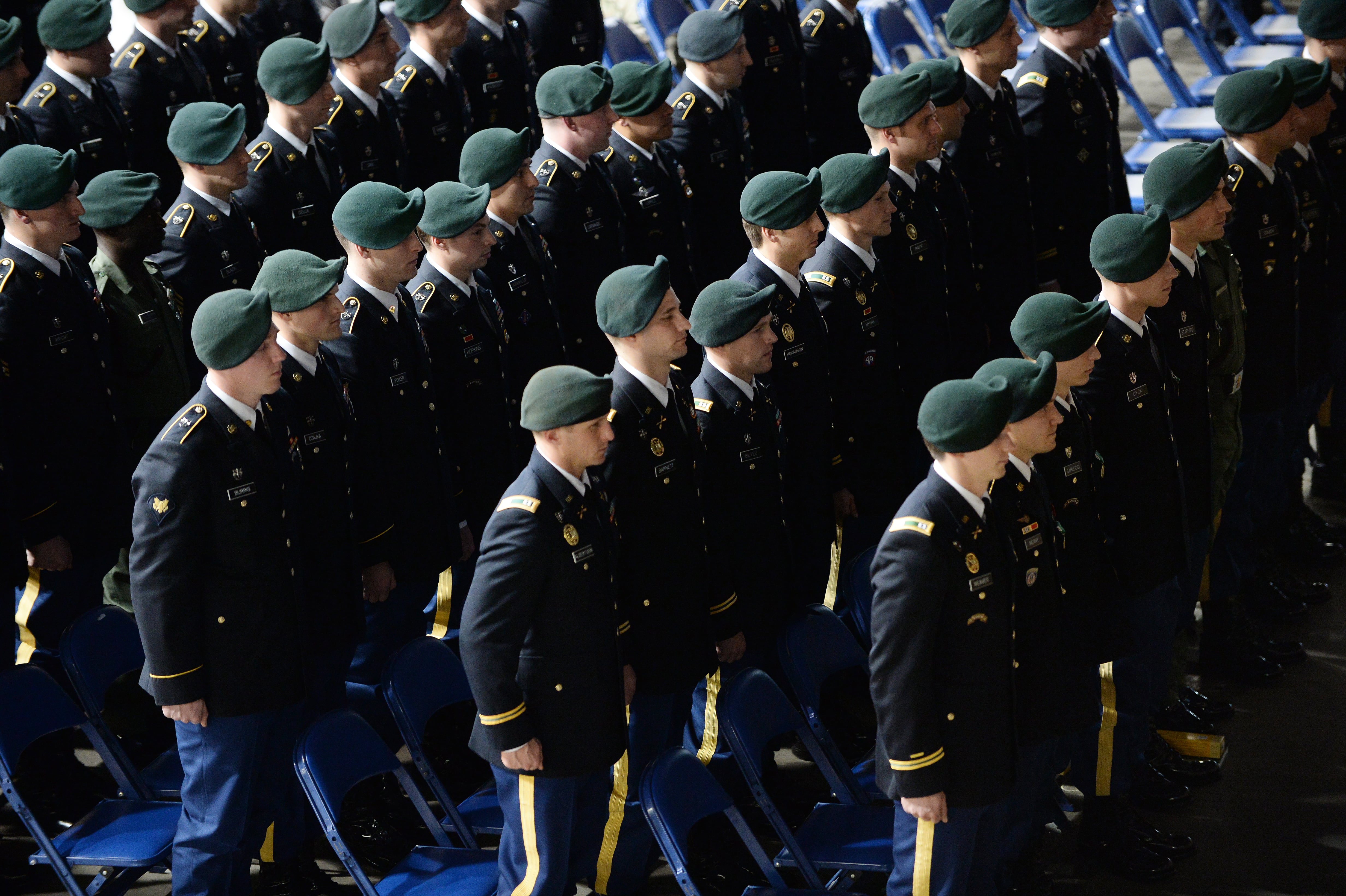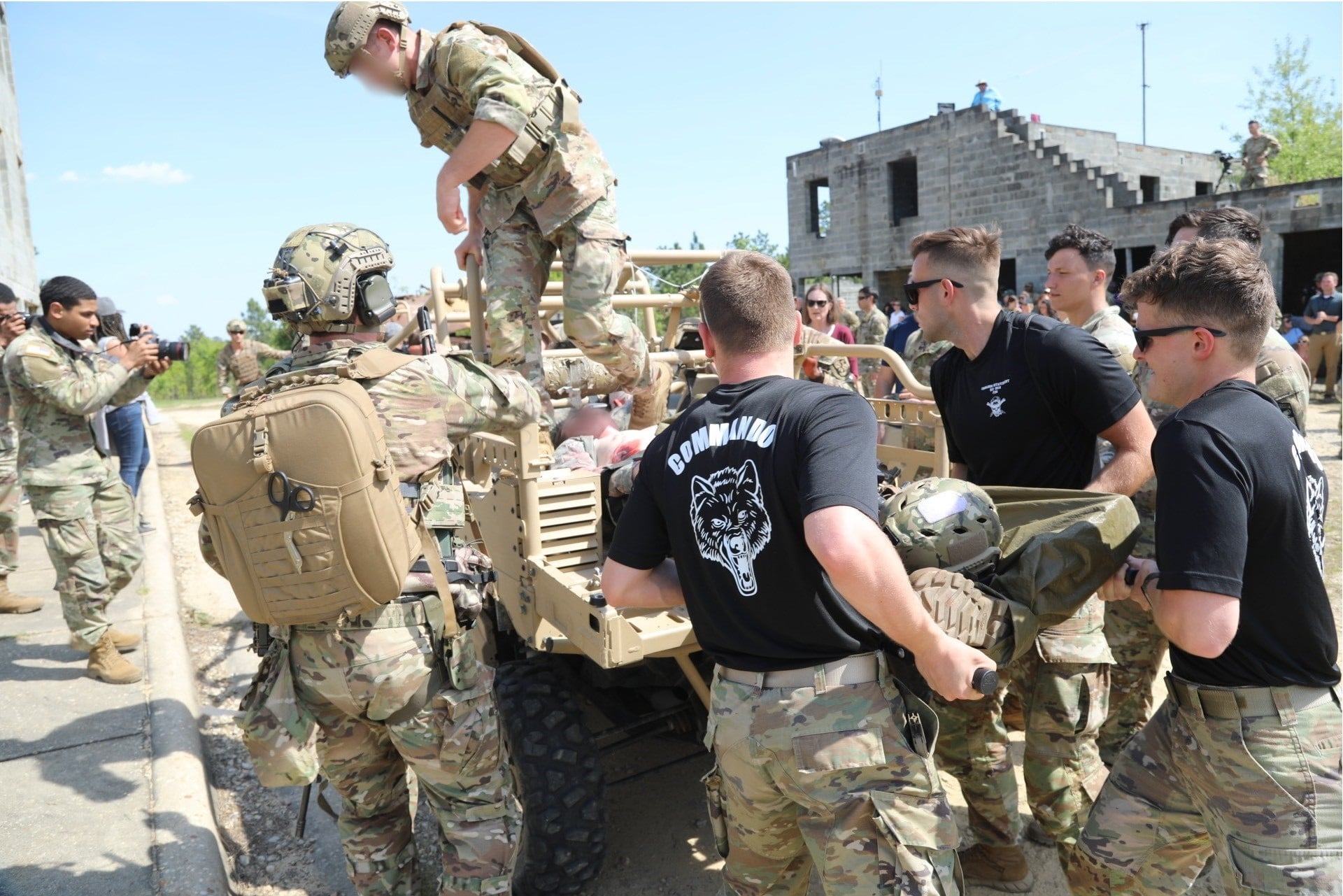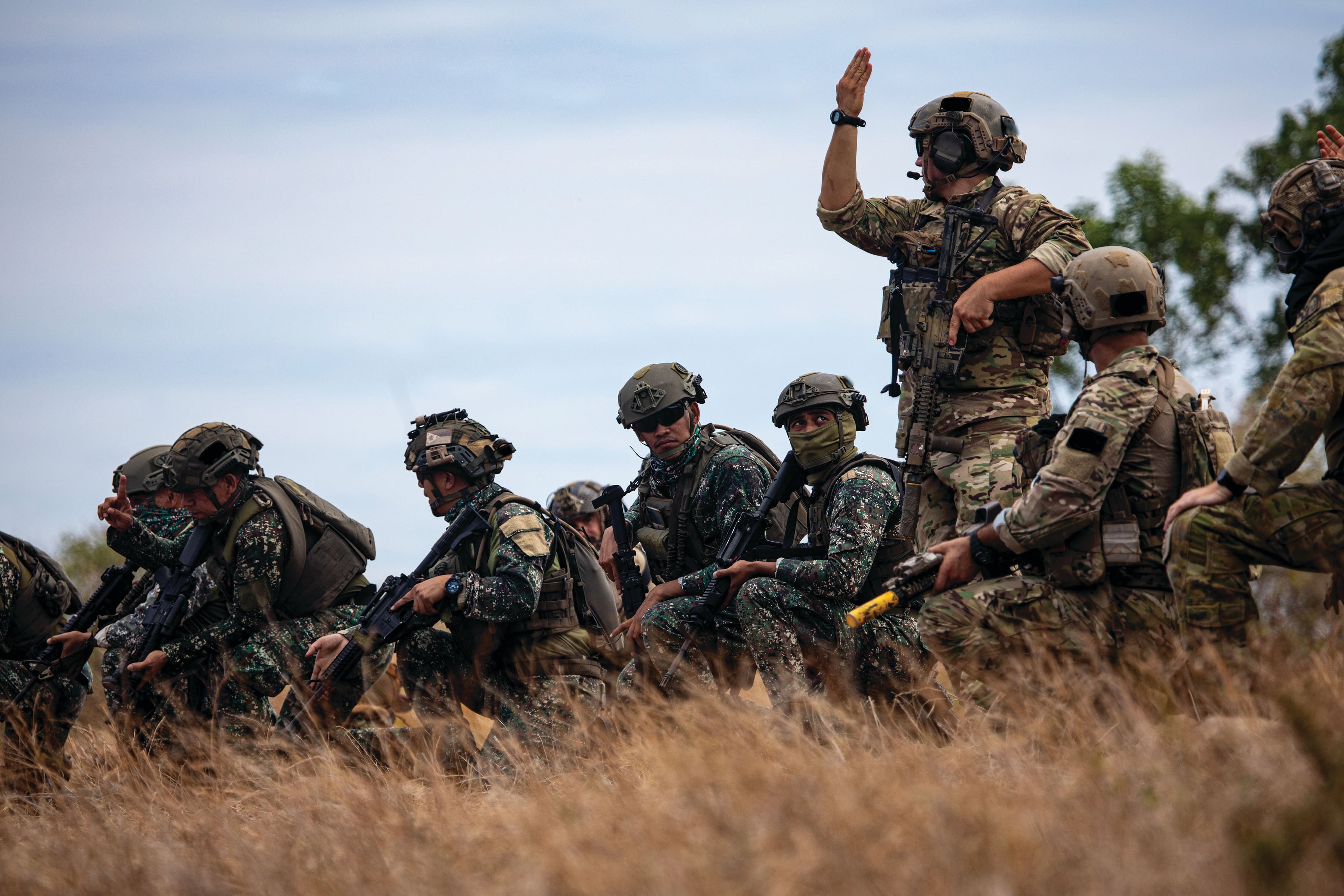FORT BRAGG — Gunshots, followed by screams, rang out on Range 68 at Fort Bragg on last week.
A soldier shouted out in pain, while another pleaded for help. Other soldiers called for a medic, and another asked someone to check on his military working dog.
The soldiers were part of a training simulation during the U.S. Army Special Operations Command’s annual capabilities exercise.
During the weeklong exercise, veterans, local and state elected officials, representatives of nonprofits and special operation forces were able to watch and participate in what organizers described as an immersive exercise that shows how special operation forces train and the potential scenarios they encounter when deployed.
After the exercise, Lt. Gen. Jonathan Braga, commander of the U.S. Special Operations Command, told the spectators that while he acknowledged the mass casualty portion was emotional for some, it’s something leaders “take seriously.”
Braga and other soldiers during the exercise April 28 told the crowd that Army special operation forces soldiers are cross-trained to respond to crises to help medics.
“It’s real,” Braga said. “It’s not a video game.”
RELATED

First-person experience
North Carolina Sen. Thom Tillis watched the exercise on April 23 with 80 congressional staffers, representatives and congressional members.
During an April 25 phone interview, Tillis said he thinks the men and women who participated in the exercise “are proving the value of the investment” Congress authorizes for special operations.
“They’re demonstrating something that’s done in dangerous places in the world, more recently with what’s been going on in Sudan,” Tillis said. “Everyone is moving. They’re clearing buildings. There are live-fire demonstrations. Special operators are in extraordinarily hostile environments while maintaining relationships with partner forces. "
A Special Forces lieutenant colonel, who helped coordinate and plan the exercise and asked not to be named because of the nature of his job, said the intent of the exercise was to convey how special operation forces work together and with partner forces and the U.S. joint force, while being a “first-person immersive experience,” for those watching it.
“We wanted people to get a feeling of what it’s like to be in the boots of our soldiers … We didn’t want bystanders,” he said.

A psychological operations master sergeant, whose name can’t be used because of the nature of his job, said he thinks the exercise was a good example of how cross-functional teams, like civil affairs, psychological operations and Special Forces “come together to meet national strategic objectives.”
“As far as the public (watching), I think it was a good introduction to the capabilities of special operations and how we can impact on a geopolitical sphere worldwide,” he said.
Scenario and real-world experiences
The exercise last week featured a simulated scenario of a pro-People’s Republic of China party running for national office in Tawain and alleging election fraud.
Spectators were able to listen and watch simulated command briefings involving civil affairs, psychological operations and Special Forces soldiers.
The exercise evolved from what it would look like if forces were to support a noncombatant evacuation of Americans from Tawain, to what a full-scale Chinese invasion of the island of Tawain would look like, while pro-Chinese propaganda circulated.
Soldiers part of a 75th Ranger Regiment platoon rappelled from two MH-47 Chinooks flown by members of the 160th Special Operations Aviation Regiment.
The Rangers moved into positions to show what it would look like to clear a building and evacuate civilians in the midst of a firefight.
“This is actually a Ranger platoon and this is how we train, so this is exactly what you’d get from any Ranger platoon anywhere in the world,” a Ranger, whose name can’t be used because of the nature of his job, told the audience.
Ahead of the April 28 exercise, Braga said elements of the 75th Ranger Regiment are currently deployed to Sudan along with the 160th Special Operations Aviation Regiment, civil affairs, psychological operations and Special Forces. The evacuations of Americans from the African nation come as the country’s military battles paramilitary forces for control.
The exercise continued with spectators being asked to volunteer to act as members of a partner force to simulate a partner-force-accompanied raid, while a military working dog with the 3rd Special Forces Group was also featured.
RELATED

Irregular warfare and Russia and Ukraine
Ahead of the exercise, Braga said special operation forces are about irregular warfare, which is “influencing relevant populations to change how they think.”
He said the current Russian invasion of Ukraine is an example.
“We’re ultimately trying to change and contribute toward changing (Russian President Vladimir) Putin’s behavior,” Braga said. “We’re trying to prevent that from escalating, stop the fighting and get him to the negotiating table.”
Braga said the goal is to “prevent World War III.”
Braga and a Special Forces colonel currently deployed to Germany as part of a task force in support of Ukraine said China and the world is watching what is happening in Ukraine.
“Everyone is watching lessons learned from Ukraine and saying, ‘Well what’s if it’s us next?’” Braga said.
He said that from the perspective of special operation forces, relationships with partner forces are key and started before Russia’s 2014 annexation of Crimea.
On any given day, Braga said, 3,000 special operation soldiers are deployed to 80 different counties and “remain dedicated” to working with international partners.
“That’s an irregular approach... We invest partner forces and truly have generational relationships,” he said.
Of the lessons being learned from Russia and Ukraine, Braga said, it’s an artillery war with drone use, but also information operations and messages from Ukrainian President Volodymyr Zelenskyy are just as important.
The world, Braga said, is supporting Ukraine, with “Switzerland giving weapons away,” and Finland and Sweden wanting to join NATO.
“The exact strategic objectives Putin was looking to avoid are happening,” he said.




